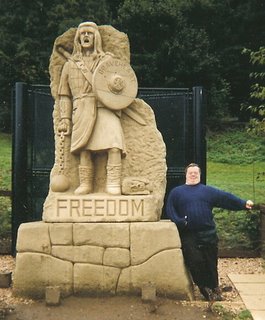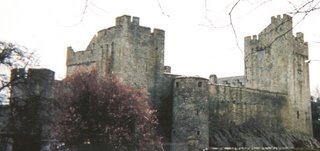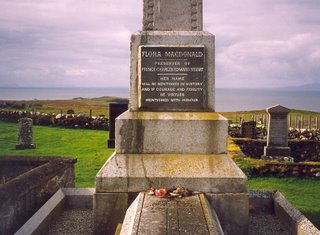MacConaghie, McConaghy
Two Roots:
Robertson: Duncan, MacDhonnchaidh, MacConachie, McConaghy, M'Connachie
or
Campbell of Inverawe
We sleuth on.
 Blair Castle, Atholl, home of Atholl Highlanders, the Duncan Connection, Perthshire, Scotland
Blair Castle, Atholl, home of Atholl Highlanders, the Duncan Connection, Perthshire, Scotland
Family history is not an obsession here, but an interest. We are looking for roots of McConaghy, that being one of the three heritage clusters we enjoy, ending up in Ireland: 1. this McConaghy heritage, Donegal-Ulster; 2. a Norse Scariff-Scharfe heritage, Kilkenny and Clare; and 3. Normans, Trillick, Guy de Brien, William Brien, a Brien cluster.
All may well be debunked as we go. For anybody with an interest in names, start at a simple one,
http://www.houseofnames.com/, but check the results elsewhere as well. McConaghy - Scotland's west coast, and the Hebrides. Find what you want to find, and believe it, or not. MacConachies leaving Scotland and becoming McConaghys in Ireland, not necessarily part of the Plantation at all, and in about 1650, says our Venerable Family Archivist, Violet. We trust her completely. You may want to document on your own, if you do not know Violet.
McConaghy.
1. The name may be spelled various ways - including "McConaghey"; and McConnaghy, early Donegal land records.
In our family, the "e" was added by Maurice McConaghey to the McConaghy that his brother used. Both appear in the histories, both were in the military in World War I. We finally found Lt. Maurice McConaghey in the Royal Scots Fusiliers, buried from WWI at Arras, France, see
France Road Ways, Somme WWI Royal Scots Fusiliers. The search for Maurice was blocked for a time until we learned of the different spelling he creatively applied.
The McConaghy Clan. Who? Not in the limelight, but durable.
2. Dalriadan roots. The name goes back in the mists to the time of the ancient kings of Ireland, to that group -- Dalriadans -- who were pushed to the Antrim area and from there, as Scotties, settled Scotland, see this account glorifying one particular family but touching on the overall history, at a MacKay site, Dalriada, at
http://www.magma.ca/~mmackay/dalriada.html
 Blair Castle, Atholl, home of Atholl Highlanders, Scotland
Blair Castle, Atholl, home of Atholl Highlanders, Scotland
59BC - 409 AD. Two Celtic (are we sure these were Celts??) groups occupied Scotland, then Caledonia, says the Magma site. The Picts and the Bretons. Rome never conquered them, never made that area part of the Empire. After Rome fell, other invaders entered Caledonia: the Scots, from the area known as Dalriada (Antrim-ish), Ireland, who appear to have gone to Kintyre and Argyll; and Angles, from Germany.
.
Names of the ancient Dalriadan kings are listed in sources like the Book of Ballymote, and the Pedigree of the Scottish Kings, and Annals of the Four Masters, with reliability questionable after time and tweakings, but a start. See the Magma site. In time, the Scots kingdom in Ireland surpassed in size and influence the Irish Scots, and the Scots -- ah, the name appears about 500 -- set up firmly at Argyll, ancient capital of
Dunadd. Hill Fort at Dunadd. See photo at
http://www.clan-duncan.co.uk/dalriada.html. Duncan. Clan Donnachaidh. Are we right so far?
.
So this is an ancient clan - among the Dalriadan clans, even if not kings (rats), those who were pushed to the northeast rim of Ireland under pressure from other invaders. McConaghy is known also as Clan Donnachaidh, from Gaelic "Donnachadh Reamhar", or - here is a good one, Duncan the Stout. How about King Duncan in Macbeth? 11th Century. See
http://www.historic-uk.com/HistoryUK/Scotland-History/DuncanandMacbeth.htm
3. An ancient king of Dalriada in Scotland was also one Dunchad mac Conaing -- not a far cry from McConaghy there. Must be so. And soon the kingdom of the Dalriada extended to Atholl. See
http://www.clan-duncan.co.uk/dalriada.html
.
Sometime, all these to be looked up for black sheep.
4. Duncan the Stout was one of the Celtic Earls of Atholl, and the top photo is Blair Castle in Atholl, home of the Atholl Highlanders, and near Queen Victoria's favorite little town, Pitlochry, see
http://www.scotland-calling.com/forts/blair. Begun in 1269, its appearance now is largely from 18th century remodelings.
.
Bonnie Prince Charlie's Jacobite forces attacked here 1745-`746. Mary Queen of Scots in 1564, and Queen Victoria who bestowed on them formal regimental colors, to that they are the only private army in Europe. Mostly bodyguards now. Grounds are some 145,000 acres. The Duke of Atholl - Dukes were second only to the King.
.
5. Atholl Highlanders
1777-1783- During this period, the Atholl Highlanders, the 77th Highlanders, or the 77th Regiment of Foot, were established, then sent to Ireland, then involved in a mutiny against going to the Indies, then disbanded, and reorganized later. See
http://www.coghlan.co.uk/athole.htm. Here is the military tartan, part of the Murray, Murray of Atholl -
http://www.regiments.org/tradition/tartans/murray-a.htm
6. Pomp and Circumstance
1839-Present - Queen Victoria's award of Regimental Colors. See them and listen at
http://www.usahpd.com/tunes.htm. Do an images search for them
On Parade yet.
7. Modern
World War I: The Atholl Highlanders fought in South Africa, then to France at Delville Wood, and at the Somme, Ypres, Arras, in particular, see
http://www.jocks.co.za/history.htm. For an excellent photgraph and history book on the Somme, see "The Somme, Then and Now - A Visual History<" by Duncan Youel and David Edgell, Dorling Kindersley 2006. This is a commemorative volume, with histories of regiments that fought there from different parts of the world.
 Stirling, Scotland, traditional wedding
Stirling, Scotland, traditional wedding Blair Castle, Atholl, home of Atholl Highlanders, the Duncan Connection, Perthshire, Scotland
Blair Castle, Atholl, home of Atholl Highlanders, the Duncan Connection, Perthshire, Scotland Blair Castle, Atholl, home of Atholl Highlanders, Scotland
Blair Castle, Atholl, home of Atholl Highlanders, Scotland Culloden Battlefield, Scotland
Culloden Battlefield, Scotland
 Skye, Dunvegan Castle, Scotland
Skye, Dunvegan Castle, Scotland Skye, Grave of Flora MacDonald who helped Bonnie Prince Charlie escape after his defeat at Culloden, 1746
Skye, Grave of Flora MacDonald who helped Bonnie Prince Charlie escape after his defeat at Culloden, 1746